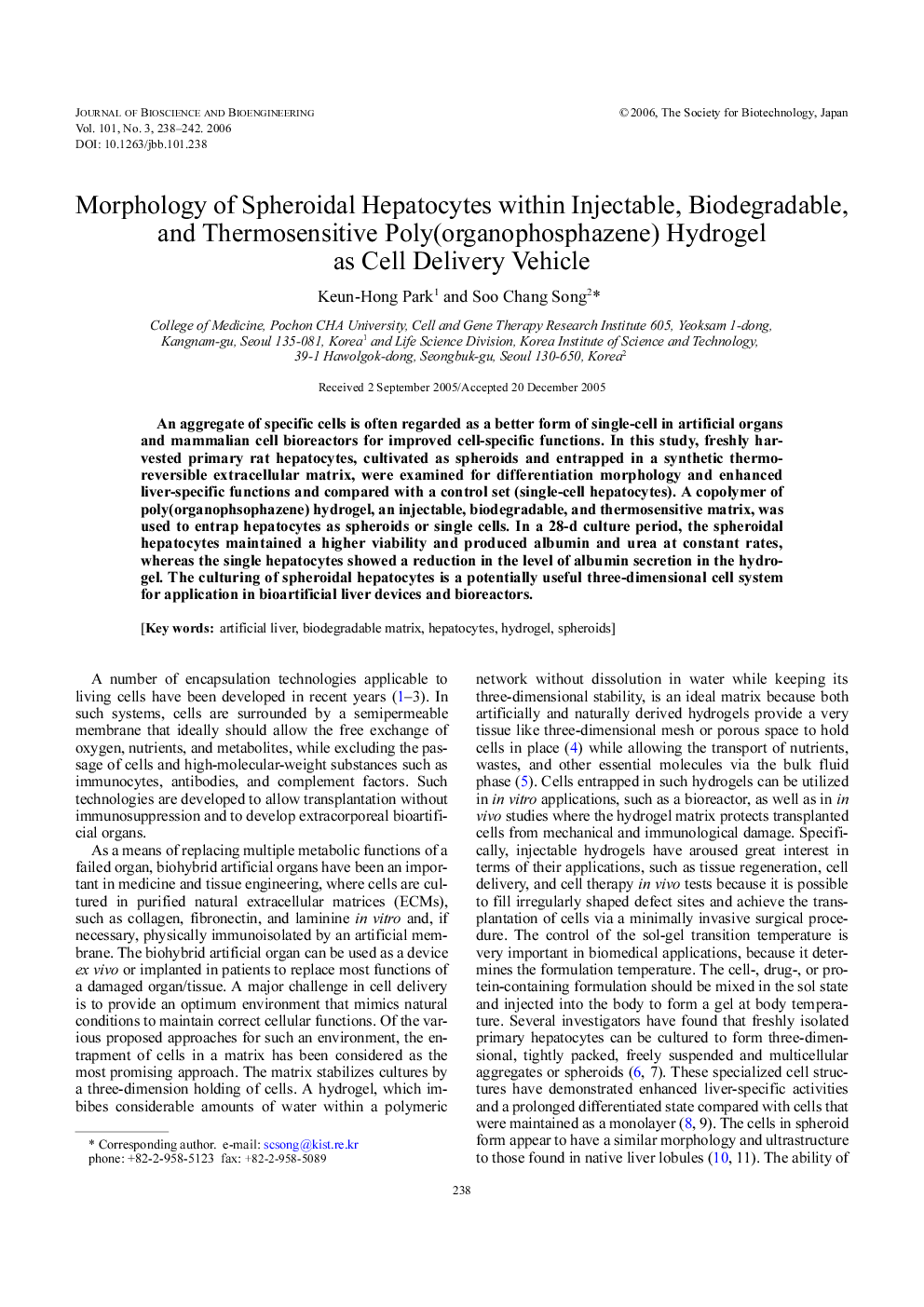| Article ID | Journal | Published Year | Pages | File Type |
|---|---|---|---|---|
| 22314 | Journal of Bioscience and Bioengineering | 2006 | 5 Pages |
An aggregate of specific cells is often regarded as a better form of single-cell in artificial organs and mammalian cell bioreactors for improved cell-specific functions. In this study, freshly harvested primary rat hepatocytes, cultivated as spheroids and entrapped in a synthetic thermoreversible extracellular matrix, were examined for differentiation morphology and enhanced liver-specific functions and compared with a control set (single-cell hepatocytes). A copolymer of poly(organophsophazene) hydrogel, an injectable, biodegradable, and thermosensitive matrix, was used to entrap hepatocytes as spheroids or single cells. In a 28-d culture period, the spheroidal hepatocytes maintained a higher viability and produced albumin and urea at constant rates, whereas the single hepatocytes showed a reduction in the level of albumin secretion in the hydrogel. The culturing of spheroidal hepatocytes is a potentially useful three-dimensional cell system for application in bioartificial liver devices and bioreactors.
